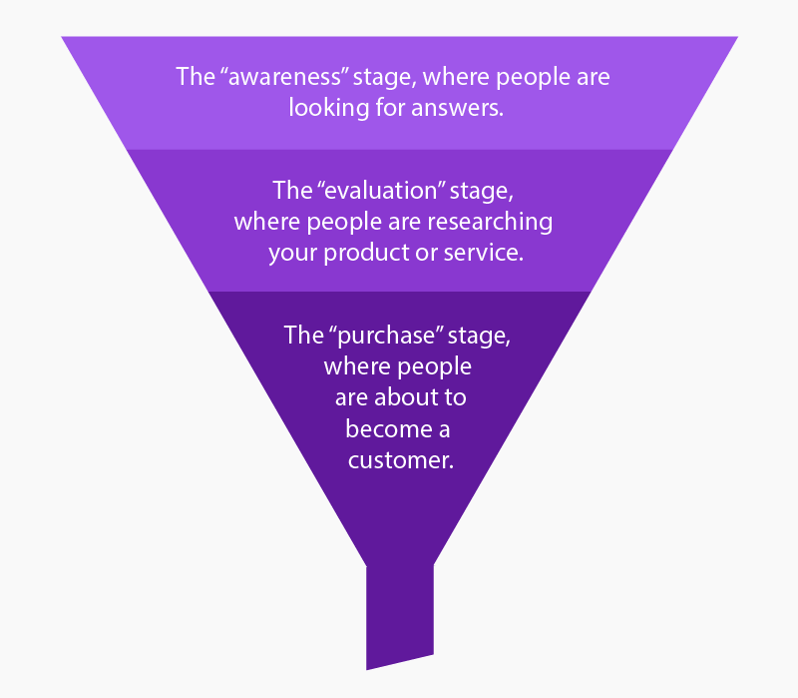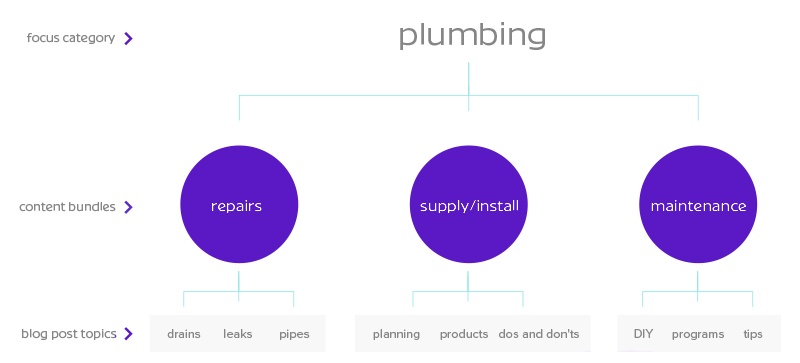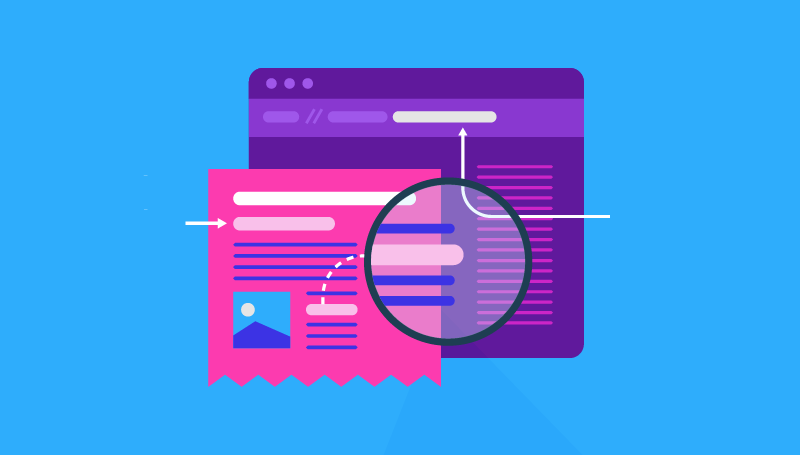We've all been there. We hit publish on our newest blog post and expect shares, likes, and an increase in blog traffic. But instead... nothing.
In most niches, you're competing with hundreds of blogs for the attention of the same readers. You have to create valuable content to be able to stand out and be seen.
It's going to be hard work, but if you put these tips into practice, you'll be on your way to fast tracking organic business growth.
1. Create a business blog
Here’s the obvious one - if your business doesn’t have a blog, it’s time to start one. A blog is a great way to generate important content that your ideal customers are looking for. Many pages of a website are static and don’t attract new traffic to the site.
When was the last time you updated the “About us” or “Services” page on your website? Not for awhile. Creating a blog gives you the ability to continually create valuable content for your prospects. It refreshes your website with new searchable content on a frequent basis.
According to a blog post by HubSpot, 70% of the traffic from their company's blog comes from old blog posts. About 90% of HubSpot's leads come from blog posts that were published months and years ago.
2. Define your Customer Personas
 As a company, you want to know who you’re looking to attract. You determine this by creating buyer personas.
As a company, you want to know who you’re looking to attract. You determine this by creating buyer personas.
Buyer personas are generalized, fictional characters that encompass the needs, goals and behavioural patterns among your real and ideal customers.
- Look through your contact database. Discover trends about how certain leads find and read your content.
- Create forms on your website. Use them to collect important information on your prospects and visitors. The more you learn, the better content you can produce.
- Work with the sales team and use their feedback to help create the personas
- Interview current clients to learn about their buying behaviours, which things influence them, where they get their information, and more. It’s important to reach out to good and bad customers. Bad customers show you who you might want to stay away from, while good customers show you what you're doing right.
When you have a clear idea of who your customer personas are, you can produce tailored content that is meaningful to them. This bigger impact you make on them, the more inclined they will be to come back for more, subscribe to your blog, share posts with their network and so on.
3. Create content specific to a stage in the buyer’s journey
Now that you know who your ideal clients are, it's time to find out what stage of the journey they’re on.

Grasping the buyer's journey allows you to create the right content for whichever stage your potential customers may be at. Content can range from educational-based, solution-based and decision-based content.
Have you ever searched online for information relating to a challenge you were experiencing and found the advice you were looking for on a company website or blog? You may have thought to yourself “wow, this was written for the exact position I’m currently in.”
This positive experience was possible because the business knew the challenge you were encountering was very common in their personas awareness stage before people become customers. They also realized the value in it for them if they could provide a solution that people could easily find, and intentionally write about topics to reach top of the funnel prospects.
When creating content with the buyer’s journey in mind, it’s also beneficial to think about the different stages of your sales funnel.
In most cases, it’s a three-stage funnel:

Every business is unique and will have their own exclusive buyer personas, buyer's journey and sales funnel. That said, considering these three key inbound marketing tools together creates a quality system for targeted, tailored content.
4. Post consistently on your blog
The more you blog, the more traffic you will see on your website. HubSpot found that companies that publish 16+ blog posts a month see almost 3.5 times more traffic than companies that publish 0-4 posts.
Additionally, companies that publish 16+ monthly blog posts receive 4.5 times more leads than companies that post 0-4.
Making the commitment to post fresh content on your blog will reap the biggest rewards when it comes to organic reach. But, like the saying goes… quality over quantity. It’s far more beneficial to post four quality blog posts a month, than 16 quick posts that no one will be interested in.
5. Utilize content bundles
Having your blog packed with exceptional articles will increase your searchable content. After you’re done researching and brainstorming content ideas, it’s important to organize them into key topics your content should be centred around. Let’s call these content bundles.
Each bundle contains a group of different blog posts that revolve around the same key topic. Each post has different, but related targeted keywords.
For example, you might have a content bundle around “CPC bidding strategies.” Some topics in this bundle could include “the value of bidding on brand terms,” “advanced bidding tactics to maximize profits,” and “utilizing bid adjustments to decrease your cost-per-acquisition.” See the illustration below as a practical example for a Plumbing/HVAC company:

To create high-quality blog articles, generate a content plan for the next 2-3 months. A great content plan includes what topics you want to cover, what type of content to create, who is writing the article and a publish date. While you’re here, map out your content bundles and what topics and keywords should be inside each bundle.
Once the articles are written, always interlink to related articles on your website. This will show search engines that your company’s blog focuses on certain topics, showcasing that the website is a reliable source for information.
6. Understand and use long-tail keywords
The sooner you understand how to properly select and use target keywords, the sooner your content will rise in search engines.
Ahrefs, a data-driven marketing toolset, conducted a study in February 2017 about one question we’ve all asked … “How long does it take to rank in Google?”. You know you’ve been there and questioned why your company hasn’t popped up on the first page of the Google search.
The case study took two million random keywords and the average ranking page was more than two-years-old. Those sites that ranked at the number one position were on average three-years-old. Only 22% of pages that currently rank in the top ten are within one-year-old.
In other words, it can take awhile to reach Google’s first page and big results aren’t expected for 9-12 months.
By creating evergreen content you will stay relevant throughout the entire buyer’s journey.
Remember, it’s called the Buyer’s Journey not the Buyer’s Quick Sale for a reason.
Within those evergreen posts, you should be using long-tail keywords. Long-tail keywords are three or four words that are specific to what you’re writing about. Using more specific wording will help prospects find your content, and will have an easier time ranking since there is far less competition.
7. Generate more traffic to your blog
Now that you know how to improve your blog, it’s time to focus on sharing this meaningful content with the world.
 Social media is a great way to drive traffic and find new customers. Look at your buyer personas and see what platforms your customers are using. Then figure out what platforms work for you and where you’re gaining engagement.
Social media is a great way to drive traffic and find new customers. Look at your buyer personas and see what platforms your customers are using. Then figure out what platforms work for you and where you’re gaining engagement.
Not every platform will benefit you and that’s okay. When you find the ones that don’t bring in traffic, don’t spend time on them.
 Email is an effective way to get your content out into the hands of interested people. An email can get people to subscribe to your blog, fill out a contact form, request a consultation or even download a key offer.
Email is an effective way to get your content out into the hands of interested people. An email can get people to subscribe to your blog, fill out a contact form, request a consultation or even download a key offer.
HubSpot says that 54% of people open emails on mobile devices, so emails must be phone-friendly.
 Subscribers hold a very key role for your company. These are people who want to hear what your business has to say. You’re going to want to nurture subscribers and keep the content you send them relevant, so they don’t click that dreaded unsubscribe button.
Subscribers hold a very key role for your company. These are people who want to hear what your business has to say. You’re going to want to nurture subscribers and keep the content you send them relevant, so they don’t click that dreaded unsubscribe button.
Keeping subscribers happy means creating valuable content and producing new offers.
 Guest Blogging is an important strategy for newer blogs that have not yet gained much traction. By establishing a relationship with larger, more prominent blogs in your industry, you will be able to gain exposure to the readership they have already built up. It’s a way to give away something for free (your article) for the opportunity to become visible to a whole new audience.
Guest Blogging is an important strategy for newer blogs that have not yet gained much traction. By establishing a relationship with larger, more prominent blogs in your industry, you will be able to gain exposure to the readership they have already built up. It’s a way to give away something for free (your article) for the opportunity to become visible to a whole new audience.
In the guest post, you should have your biography with a link back to your website or blog. This allows you to gain external links from relevant and authoritative websites. This is important for the search engines to pick up on, and for the readers who enjoyed your article and want to learn more about you.
 Paid Advertising is another great option when you want to generate more traffic to your website. For paid advertisements to remain inbound and not disrupt customers, they must follow a few best practices.
Paid Advertising is another great option when you want to generate more traffic to your website. For paid advertisements to remain inbound and not disrupt customers, they must follow a few best practices.
- Consider your personas. Publish your ads to platforms your personas are active on and consider what stage of the buyer’s journey they’re on.
- Promote the right content. Paid advertising won’t offer the lead conversation results you want if you’re promoting the wrong content. Look at what’s doing well on your blog and promote those posts.
- Manage the frequency of your ads. Exposure is good, but your potential customers may not want to see your ad 100x/day.
- Always make sure the content you are promoting is relevant to your audience. If it’s not specific to their needs, it’s pointless.
8. Measure and analyze your content
For your inbound strategy to succeed, you need to be able to track what is working and what’s not. Analyzing helps close the loop on your day-to-day marketing efforts. There are six areas to focus on when tracking and measuring your company’s content. Each area is different and has different goals and metrics to follow.
Brand awareness measures reach on different social media channels, business mentions and how many people are searching for your company.
Engagement measures who’s viewing your content and interacting with it. By measuring who is seeing your content, you see the signals readers are giving you without you having to ask them questions. Are they sharing your content? What about liking, retweeting or sharing it?
Lead generation allows you to prove your time and money have been well spent. You can measure how many leads have been generated and compare against your marketing / content producing costs.
Customer conversation and sales allow you to measure your Return on Investment (ROI). This will show where your strategy is falling short and will help provide a new way to move forward.
Customer loyalty and retention show you the life value of your customers. It measures how often they buy from you and if they’re coming back for more. If you can get your customers to stick with you, your ROI grows exponentially.
Web analytics will help you understand how visitors are finding your content, how engaged they are and allows you to measure your organic growth over time. You can also view which landing pages and blog posts are performing best, and make data driven decisions to improve your visitor experience and site conversion rate.
When you find areas that need improvements, don’t change everything at once. Make small changes one at a time, that way you can track if they were the right changes. If you change everything at once, there will be no way of telling what the difference maker (good or bad) was.
Enjoy the journey
In conclusion, increased organic reach will take time. Like we said before, it’s called a journey for a reason. Quality, educational-based content posted at a high frequency is your key to growth.
We can't promise you overnight results, but we can promise steady improvements. These eight tips will help you create a more sustainable future with better online exposure, increased organic traffic, a steady flow of new subscribers and more quality leads.
Roketto Team
Who the heck is "Roketto Team"? Great question! We use this authorship from time to time for guest writers and previous authors are no longer affiliated with the Roketto brand. What about the cute little rabbit in the Roketto Team avatar? That's Piko, our loveable, space travelling mascot. If this is your first time seeing him, don't worry, it won't be your last. He likes to turn up throughout Roketto's website and content, always looking to help our audience with their marketing needs.




















2.png)
2.png)




